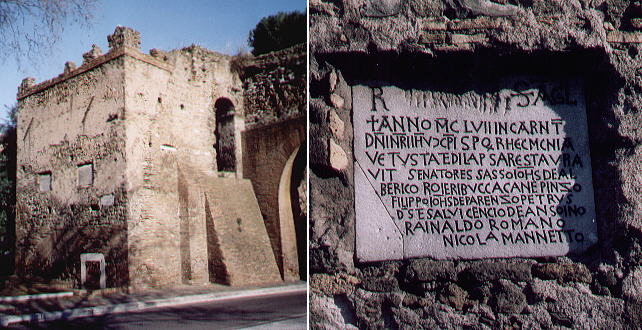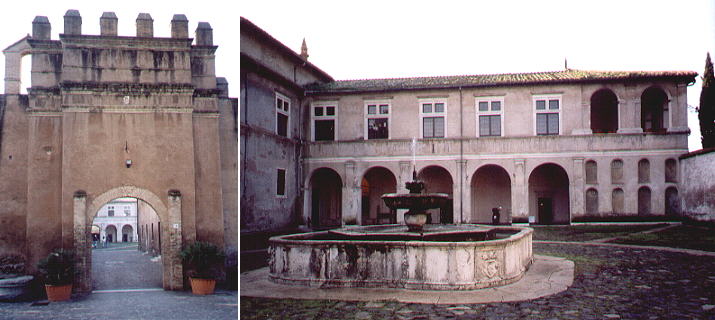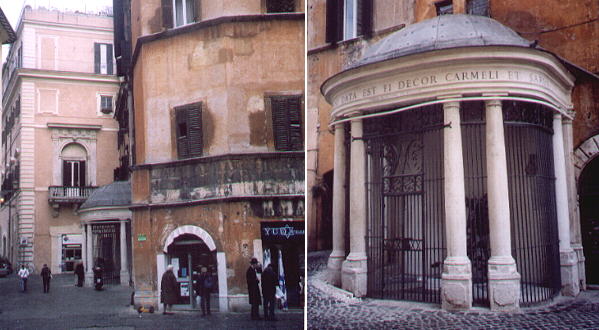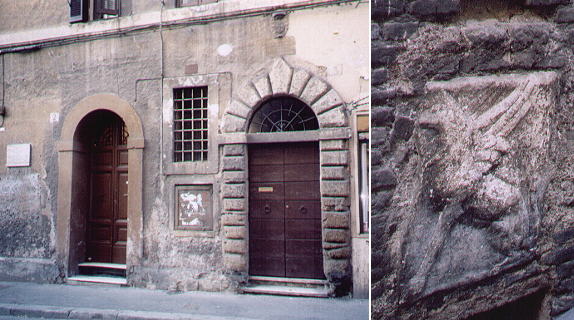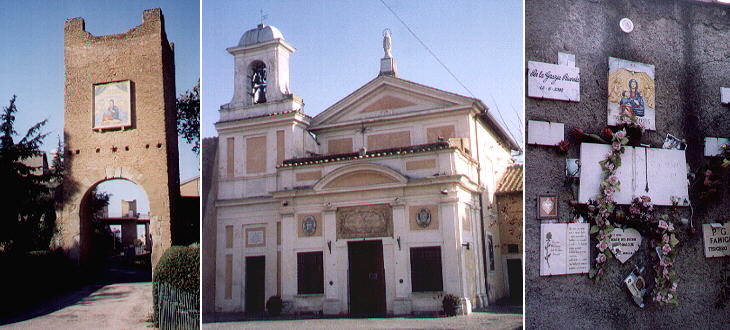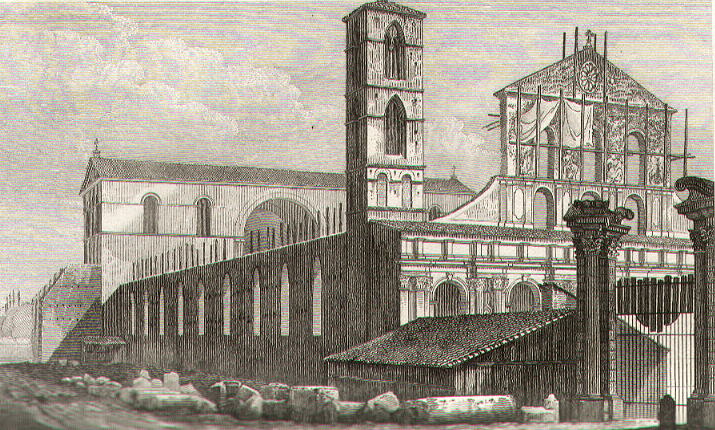|
TIMEO HOMINEM UNIUS LIBRI (St. Thomas Aquinas) (I fear the man who trusts one book only)   In plate 8: Porta S. Giovanni Porta Metronia
Roman car drivers who live in the highly populated modern quarters built along Via Appia and Via Latina know very well Porta Metronia.
But the arches in the walls which are usually called
Porta Metronia were opened in the 1930s. The historical gate, a posterula a minor opening in the walls, is mainly under the current ground
level and only its upper part (a walled arch) is visible in a tower at the center of the modern gate.
A short digression from Via Portuense, the road linking Rome to Porto, its ancient artificial harbour, leads to a hunting lodge initially
built by Sixtus IV. Innocentius VIII, Julius II and Leo X enlarged it with the
advice of Giuliano da Sangallo and Bramante. Later on Pius IV added a large fountain at the center of the courtyard. Because of its unprotected location the lodge
was fortified and from the outside it has the appearance of a castle.
"She warned him that he must next pass the Island of the Sirens, whose beautiful voices enchanted all
who sailed near. ... 'Plug your men's ears with bees-wax' advised Circe" (Robert Graves - The Greek Myths). It is said that the Jews
followed Circe's advice when they were forced to listen to sermons delivered from within this XVIIIth century building attached to the
house of Lorenzo Manilio.
On April 16, 1783 Benedict Joseph Labre, a French monk who was leading a very
penitential life in the streets of Rome, sleeping on the ground and eating very little, lost consciousness on the steps
of S. Maria ai Monti. He was brought to a house belonging to the Portuguese church of S. Antonio, where
he passed away that same day. Later on the room where he died was transformed into a small chapel (more on him).
In 1744 a man attacked by stray dogs prayed for help before an image of the Virgin Mary painted on the main gate of Castel di Leva, once a fortress of the Orsini.
He was miraculously spared by the dogs and the image soon became popular and other miracles were attributed to the
intercession of the image called Madonna del Divino Amore. In 1744 a sanctuary was erected to preserve the image.
The location of Castel di Leva (between Via Appia and Via Ardeatina) can be seen in a map showing the
environs of Rome (click here: Castel di Leva is to the left of the letter G). The sanctuary became extremely popular in 1943 when Pope Pius XII entrusted the safety of Rome to Madonna del Divino Amore.
The following description of the fire is contained in Jeremiah Donovan's 1842 Rome Ancient and Modern and the image
is an illustration from the same book by Gaetano Cottafavi: "The year 1823 forms a memorable epoch in its history. Repairs were then being made
on the outside of the basilic by order of Pius VII, who had made his religious profession in the
adjoining monastery, when, very early in the morning, the whole roof was discovered to be in
flames, and soon after descended with an awful crash, carrying with it a considerable portion of
the walls, and burying in its smouldering ruins calcined pillars, detached mosaics,
paintings, and statues; and, in the short space of five hours, the work of ages was
reduced to little more than bare walls. Even the columns of porphyry, notwithstanding
their extreme hardness, were shivered to pieces; and the large bronze door of the portico
was partly melted by the violence of the conflagration. The origin of the fire remains a secret;
but the ruin which it has left serves to explain the manner in which many of the edifices of
ancient Rome fell before the same destructive element." Go to my Home Page |
All images © 2005 by Roberto Piperno. Write to romapip@quipo.it (alternative e-mail address at romeartlover@katamail.com)
